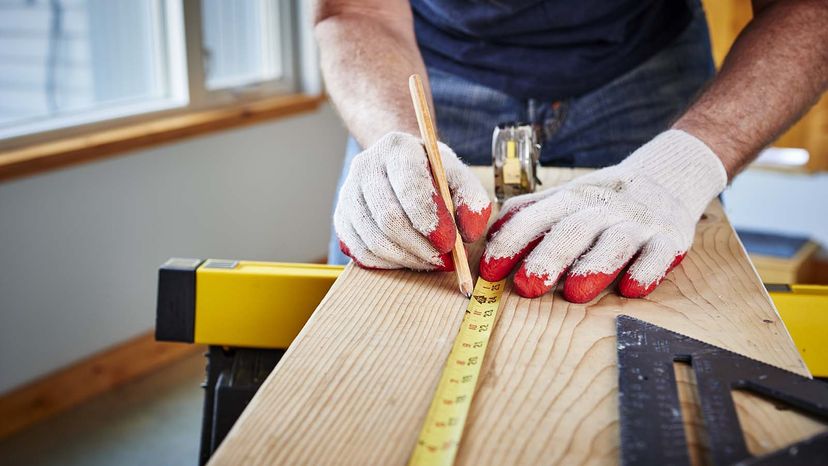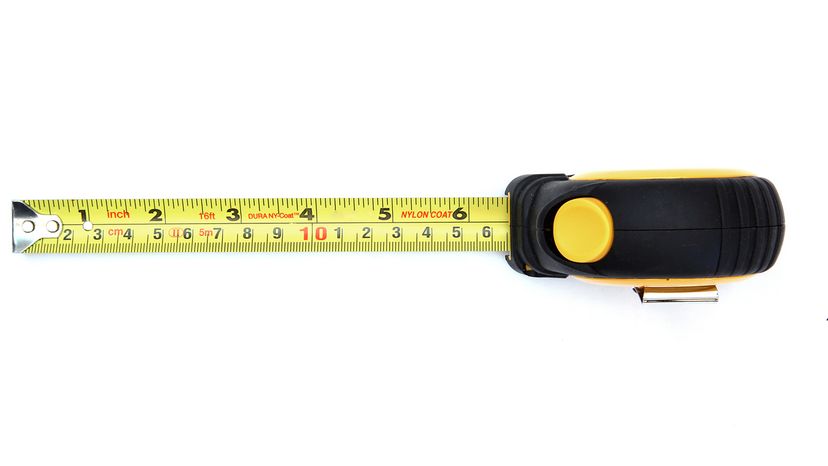Most tape measures you'll see in the United States have the boldest markings in inches and feet. So when looking at the tape starting at the hook, there will be number markings for every inch, as well as number markings for every foot on the top line of the tape.
Once the tape measure goes past 1 foot in length, the inch markings on the top line increase to 13, 14, 15, etc. instead of starting over at 1. Some measuring tapes also have additional smaller numbers that equate with the last foot mark. For example, the tape measure might designate 22 inches equal 1 foot, 10 inches.
Let's look at how to actually read a tape measure in inches:
- When reading a tape measure in inches, mark the closest full inch to the end point you're measuring. Note how many indicator lines remain. Add those fractions of an inch remaining to the whole inches to get your total measurement.
- To read an inch, look for the large numbers in bold, black type. They refer to the longest markings along the edge of the tape.
- To read 1/2-inch measurements, locate the second-longest mark between the longer inch marks. For 1/4-inch marks, look halfway between the 1/2-inch marks.
Keep in mind when you're learning how to read a tape measure in inches, the majority of tapes will divide each inch into 16 sections. That means you can get accurate measurements within 1/16-inch, including a half-inch mark, a quarter-inch mark, an eighth-inch mark and a sixteenth-inch mark.

